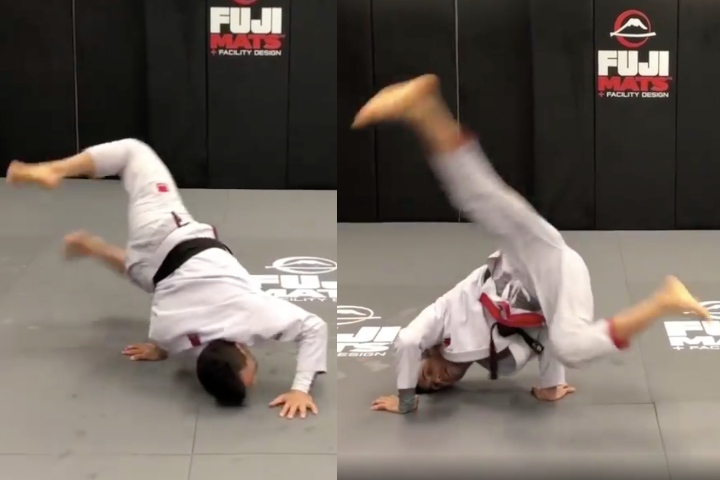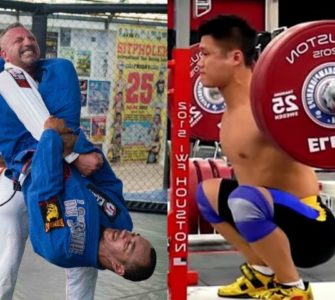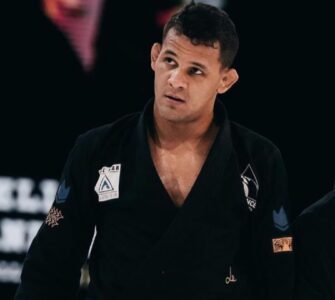Capoeira and Brazilian Jiu-Jitsu are only two of the many martial arts you would love to learn. The two martial arts have an origin from Brazil but are very different. Let’s discover more about capoeira vs bjj.
Both of them are a combination of various techniques for fighting: one is for defense or hurting the opponent while the other is for entertainment purposes.
All people of different ages can participate in martial arts. When you let your kids learn the various fighting styles, it enhances their bodies and minds.
Learning fighting styles at a young age gave me the confidence and courage to face so many obstacles. There was a time when confidence got to my head, and I felt I could fight burglars trying to break into our house.
Even though there are many similarities between Capoeira and Brazilian Jiu-Jitsu, there are as many differences.
Before we embark on the differences between Capoeira and Bjj, let me give you the history of these two types of martial arts.
History of BJJ
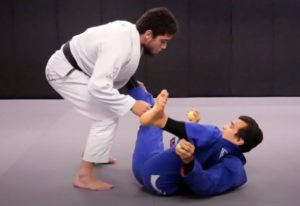
The inception of BJJ first took place in Japan, but it was known as Jiu-Jitsu. A century ago, it began its history in Brazil, thus the name Brazilian Jiu-Jitsu.
Samurai warriors used Jiu-Jitsu in a bid to save themselves after losing a battle. In 1925, Geo Omori introduced Jiu-Jitsu to Brazil through the Judo school he opened.
He had disciples Mitsuyo and Luiz, who he sent worldwide to make the art known to everyone. Maeda kicked off the mission through a Gracie family in Brazil. However, one of Gracie’s offspring introduced a softer version of Jiu-Jitsu which encouraged the participants to use leverage instead of strength.
Later on, the Maeda and Gracie family spread the same art but with a different perspective. The type the Gracie family promoted was ground fighting, while the other was more about foot locks.
History of Capoeira
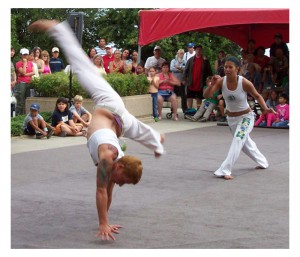
Capoeira is a much older art compared to BJJ. It originated in the 16th century from the blacks, a time when Portugal colonized Brazil. The Portuguese used to carry out the slave trade in Brazil, where black slaves were overworked and treated inhumanely.
According to Dr. Desch-Obi Capoeira, the art originated from a traditional dance of the Angola people (Engolo). The dance involved slap-boxing, head-butting, kicking, evasion, deception, and many more gestures.
The slaves sought a way to free themselves from the Portuguese through dancing. Capoeira became a form of practicing but in a disguised dance. A few people managed to flee away from the colonizers by using martial arts.
The Brazilian republic had to declare Capoeira illegal after people started using the dance as a street fight method. Fortunately, the government lifted the ban in the 1920s, and it gradually became a martial art.
Now that you have a glimpse of how the two arts came to be, let us understand the differences.
Training
Capoeira training involves using your lower body to take down your opponent. Most Capoeira martial artists use their upper body as guidance to the more downward body movements. However, there are times when the upper body carries out attacks.
All the moves have to align with the rhythm of the traditional song. A critical style used by Capoeira martial artists is Ginga, majorly for defense and attacking purposes.
The type employs a constant upper body movement technique to confuse the opponent then attack unexpectedly using the lower body parts.
BJJ’s training is different from Capoeira’s. The training puts much effort into submitting even without strikes.
Participants can increase their strength using three foundational methods. The first part of the drill method is practicing against a partner who will not resist; after that, isolation sparring then full sparring.
If you are a practicing BJJ, there are some conditions you have to follow. You have to gain a bit of leverage before submitting. Some of the leverage positions include grappling, back mounts, full mount, and side control.
Progression and belt system
Both arts have a bit of the same rankings, but a few details separate the systems.
BJJ ranks advancements according to skill levels. Each colored belt signifies the practitioner’s technical skill and experience level.
It is a requirement for one to be a given age to receive a belt depending on the color: white belts have no age limitations, kids under sixteen years can receive orange, grey, yellow and green belts (junior belts), and above sixteen years can receive purple and blue belts (primarily based on experience level). To obtain the brown belt, the practitioner has to wait two years and slowly get the red, black, and white belts.
The capoeira arts system, on the other hand, is the opposite. The master determines whether you deserve a particular colored belt or not.
Over the years, it has been so since there was no system in place to guide masters and students on how to award belts. A master can decide all of the students to pass and graduate without any formal ranks.
The kind of system they use is the colored rope system. The colors used for the ropes represent Brazil’s flag- white, yellow, green, and blue. People with affluence have a unique system.
Rules
The two groups found in BJJ are the Gi and No Gi. Gi is the most popular style practiced; thus, the rules will be about the style.
Either in practice or a match, you are not allowed to slam your opponent in any way. Escaping submission by leaving the mat or even talking to the referee is prohibited.
You are at a higher chance of scoring sweep points by making use of your legs. It is essential to avoid neck cracks.
Ground rules used in Capoeira are different from what BJJ uses. When performing, Roda Capoeiristas may fight even for hours.
The fight is not absolute; it is supposed to be pretentious with no direct contact with the opponent. The tempo and rhythm of the music influenced the level of formality in the fight.
Who will win Capoeira vs. BJJ?
You can judge from the information above that an individual training for BJJ will have the upper hand compared to the one doing Capoeira.
One reason is that BJJ is used for self-defense purposes while Capoeira is for entertainment.
Capoeira vs Bjj – Who Wins for Physical Fitness?
For fitness purposes, Capoeira takes the win. Capoeira is more like a dance, which involves the movement of every body part.
A fight can take even hours altogether, exercising your body parts while enjoying rhythmic music from Brazil.
Capoeira vs Bjj: The Best Sport for You
It isn’t easy to choose between the two types of martial arts because each one has unique benefits. BJJ allows kids to build their physical strength, and anyone can master it no matter the body size.
Capoeira, on the other hand, promotes acrobatics, discipline, and self-control. Music trains your ears to be alert which is essential for training.
All in all, I can say that both of them are important for mental and physical development.
Final Thoughts
Martial arts play an important role in our lives spiritually, mentally, and physically. From this article, we have talked about the history and differences of capoeira vs bjj.
We also got to look at which one is better in terms of self-defense and fitness. I hope you have a better understanding of BJJ and Capoeira after reading this article.
Build Your Body For Grappling With Rubens “Cobrinha” Charles’s Guide To His Capoeira-Inspired CapoFit Workout System.
- Rubens “Cobrinha” Charles is one of the best Brazilian jiu-jitsu competitors ever, with 5 Black Belt IBJJF World Championships, 4 ADCC World Championships, and years of elite success.
- Get your body strong, limber, and resilient to injury with Rubens “Cobrinha” Charles’s CapoFit Workout series, exercises that grapplers of any level can use to become more effective on the mat.

